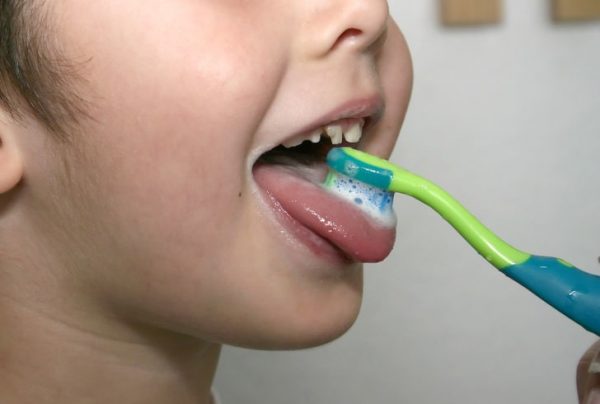Say goodbye to your bad teeth
- Published in Cosmetic Dentistry, Tin tức
Tooth decay prevention
Tooth decay is the destruction of tooth structure and can affect both the enamel (the outer coating of the tooth) and the dentin layer of the tooth.
Tooth decay occurs when foods containing carbohydrates (sugars and starches), such as breads, cereals, milk, soda, fruits, cakes, or candy are left on the teeth. Bacteria that live in the mouth digest these foods, turning them into acids. The bacteria, acid, food debris, and saliva combine to form plaque, which clings to the teeth. The acids in plaque dissolve the enamel surface of the teeth, creating holes in the teeth called cavities.
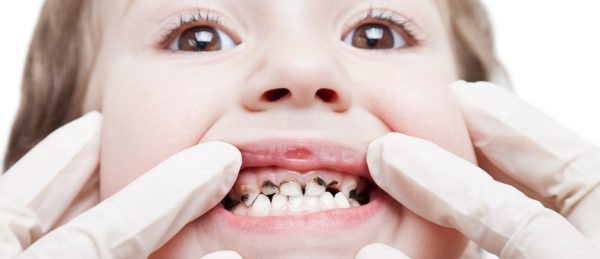
To prevent tooth decay:
- Brush your teeth at least twice a day with a fluoride-containing toothpaste. Preferably, brush after each meal and especially before going to bed.
- Clean between your teeth daily with dental floss or interdental cleaners, such as the Oral-B Interdental Brush, Reach Stim-U-Dent, or Sulcabrush.
- Rinse daily with a fluoride-containing mouthwash. Some rinses also have antiseptic ingredients to help kill bacteria that cause plaque.
- Eat nutritious and balanced meals and limit snacks. Avoid carbohydrates such as candy, pretzels and chips, which can remain on the tooth surface. If sticky foods are eaten, brush your teeth soon afterwards.
- Check with your dentist about use of supplemental fluoride, which strengthens your teeth.
- Ask your dentist about dental sealants (a plastic protective coating) applied to the chewing surfaces of your back teeth (molars) to protect them from decay.
- Drink fluoridated water. At least a pint of fluoridated water each day is needed to protect children from tooth decay.
- Visit your dentist regularly for professional cleanings and oral exam.

Researchers are developing new means to prevent tooth decay. One study found that a chewing gum that contains the sweetener xylitol temporarily retarded the growth of bacteria that cause tooth decay. In addition, several materials that slowly release fluoride over time, which will help prevent further decay, are being explored. These materials would be placed between teeth or in pits and fissures of teeth. Toothpastes and mouth rinses that can reverse and “heal” early cavities are also being studied.
- Published in General Dentistry, Tin tức
Bone graft for dental implants
For those who are missing one or more teeth, the cosmetic effect of a dental implant is almost unbeatable. Dental implants look and function the same as a regular tooth, and a successful implant is just about undetectable. It is always important, however, to make sure that you understand all the various aspects of an oral surgery, and dental implants are no different. One of the main things to be aware of is the possibility of needing a bone graft for dental implants.

Bone grafting
A dental implant basically has two pieces: a metal cylinder that is placed into the jaw bone and functions like the root of the tooth, and an abutment that screws into the first piece. A crown is then placed on the abutment, creating the appearance of a tooth.
The oral surgeon may talk to you about undergoing a bone graft for dental implants if he believes that your jaw bone is too thin or soft to keep the implant in place in its current state. If the bone cannot support the implant, it may cause the implant surgery to fail.
In a bone graft procedure, the surgeon will take a section of bone from another area of your body, or – as is most often the case now – use a special bone grafting material, and graft it onto your jaw bone. You will then have to wait, most likely several months, while the graft creates enough new, strong bone to make sure that the implant will be stable and secure. It is possible if you only need a minor graft that the procedure might be able to be done at the same time as the implant surgery, but your dental specialist will make the final decision. A successful bone graft allows your jaw bone to be strong enough to support your dental implant.

Once the bone graft is complete, the rest of the implant surgery can proceed. As with any surgical procedure, it is important to discuss your personal medical history and all the risks and benefits of the surgery with your dental specialist. Once your doctor decides you are a good fit for the procedure, you can look forward to a brand new smile.

- Published in Dental Implant, Tin tức
Zoom whitening
The Zoom Teeth Whitening System is one of the most popular teeth whitening systems available on the market today. In fact, it is the most widely used light activated the system by dentists worldwide. The product comes in an all-inclusive pack. This means that the dentist is provided with all the necessary materials required for professional tooth bleaching in a single ready to use kit. The product includes the tooth whitener, the bleaching light and a number of disposable and single-use items to be used on the patient while performing Zoom! Whitening treatments.
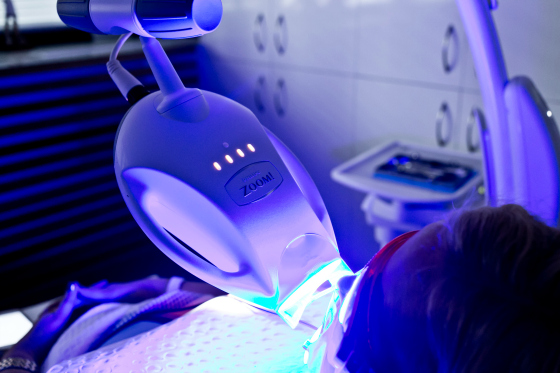
As a part of the procedure, the Zoom! Teeth Whitening System requires the use of a mercury metal halide light for bleaching. According to Discus Dental Inc, the wavelength of the light emitted from its units is in the range of 350-400 nm. The light is violet in color. The manufacturer claims that the mercury metal halide light with this wavelength activates the Zoom Whitening System, speeding up the bleaching process and enhances its performance.
The light unit in the Zoom! System comes with a built-in infrared filter. The filter helps in minimizing the amount of heat generated at the surface of the teeth from the light during the bleaching process by filtering the emissions. The Zoom! Teeth Whitening System is capable of whitening both the top and bottom teeth simultaneously with a strategically placed light.
Discus Dental developed a newer bleaching lamp in 2007, called the Zoom Advanced Power Lamp. It’s advertised to dentists as a more powerful tool – whitening teeth by as much as 2 shades more than the previous Zoom lamp product. Clinical studies conducted by The Dental Advisor in November of 07 seem to confirm this lamp’s claims – with results showing whitening improvement in the 1.9 range over the previous protocol.
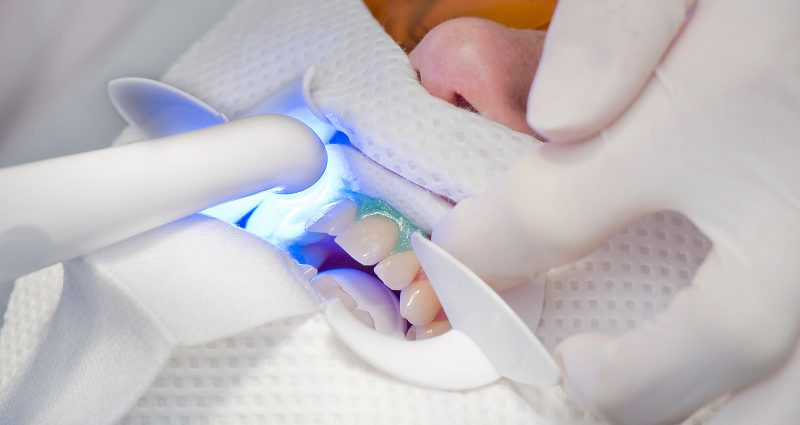
The existing Zoom protocol and lamp have been used on the market for a long time. While the majority of patients report no heating effect during the bleaching treatment, some patients have experienced lip burns or tooth dehydration as illustrated in the user comments below. The new Advanced Power Light, however, has been shown to cause less sensitivity in sensitivity-prone or almost-sensitivity prone patients.

The Zoom! Teeth Whitening System has several steps. First, the doctor evaluates the patient’s pre-whitening tooth shade. The dentist then isolates the teeth that need to be whitened with the use of a dental dam. The patient is protected with a bib. The dentist then applies the hydrogen peroxide whitening gel on the surface of the teeth. After the application of the whitening gel, the activating light is used on the teeth for activating the whitening gel. The tooth whitener is then left for about 20 minutes. The procedure is repeated two more times, with each application lasting for 20 minutes. After the procedure is over, the teeth are washed thoroughly and the whitener is removed completely from the surface. The dentist then applies 1.1% neutral sodium fluoride gel on the teeth surface to reduce or prevent any sensitivity to hot and cold items. Finally, the patient is provided with an at-home tooth whitening system along with instructions for following up.
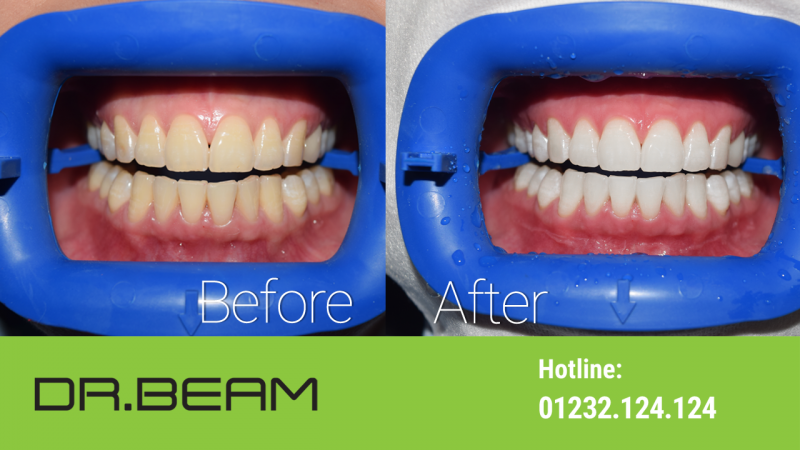
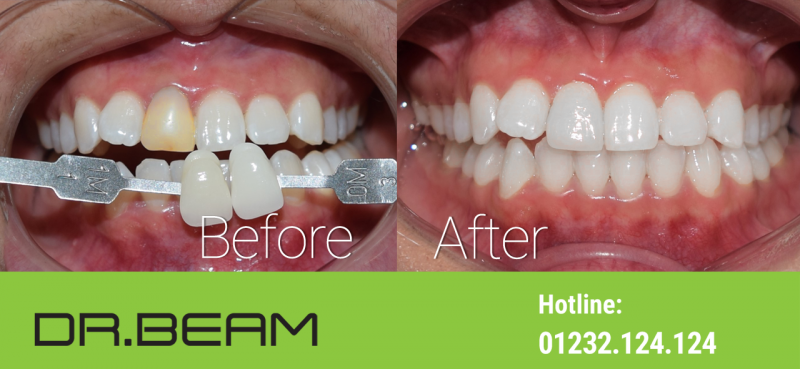

- Published in Cosmetic Dentistry, Tin tức
Root planing and scaling teeth
If your dental hygienist cleans your teeth every six months or so, you know that a routine professional cleaning involves scaling teeth and the gumline to remove plaque and tartar, and polishing to remove stains and smooth the tooth’s surface. This is done to keep your teeth and gums healthy. If you have symptoms of gum disease, however, you may need another type of cleaning, called scaling and root planing.
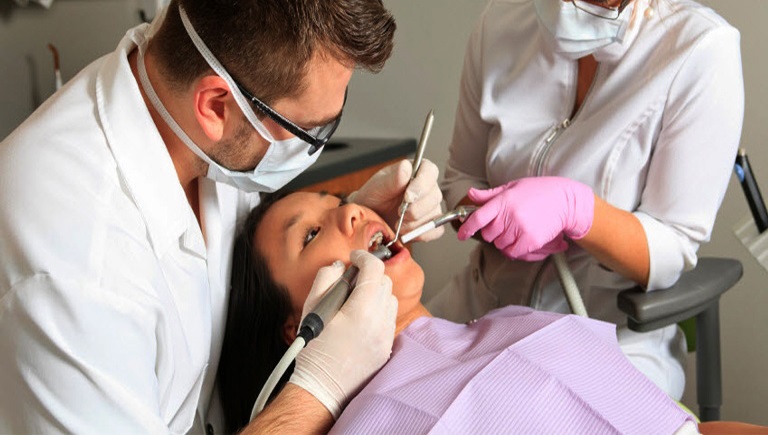
Although routine cleanings are done to prevent periodontal (gum) disease, scaling and root planing is a non-surgical procedure done to treat periodontal disease. In fact, this procedure – sometimes called a deep cleaning – is considered the “gold standard” of treatment for patients with chronic periodontitis.
Healthy gum tissue fits tightly around each tooth. But, when bacterial plaque and tartar accumulate around and under the gums, tissues that support your teeth may be affected and periodontal disease can develop causing deeper pockets to form.
When you have more advanced signs of gum disease (bad breath, heavy tartar buildup and unhealthy pocket depths of 4mm or more), your dentist may recommend scaling and root planning as the first procedure necessary to treat the condition.
Scaling and root planning teeth, provided by either your dentist or dental hygienist, may take more than one appointment to complete, and a local anesthetic is often used to minimize any discomfort.
The procedure involves thoroughly scaling all plaque, bacterial toxins and tartar deposits from your teeth and root surfaces; and then root planning, which smoothes all rough areas on your roots’ surfaces. Smooth root surfaces keep bacteria, plaque, and tartar from re-adhering underneath the gumline, allowing your gums to heal and reattach themselves more firmly.
- Published in General Dentistry
Bruxism (teeth grinding)
To evaluate the extent of bruxism, you need to check for:
– Tenderness in your jaw muscles
– Obvious dental abnormalities, such as broken or missing teeth
– Other damage to your teeth, the underlying bone and the inside of your cheeks, usually with the help of X-rays
A dental exam may detect other disorders that can cause similar jaw or ear pain, other dental problems or health conditions.
If you or your child has bruxism, the treatment might be to preserve or improve the teeth. Although these methods may prevent or correct the wear to your teeth, they may not stop the bruxism:
Splints and mouth guards. These are designed to keep teeth separated to avoid the damage caused by clenching and grinding. They can be constructed of hard acrylic or soft materials and fit over your upper or lower teeth.
Dental correction. In severe cases — when tooth wear has led to sensitivity or the inability to chew properly — your dentist may need to reshape the chewing surfaces of your teeth or use crowns to repair the damage.
Muscle relaxants. In some cases, your doctor may suggest taking a muscle relaxant before bedtime, for a short period of time.
Botox injections. Injections of Botox, a form of botulinum toxin, may help some people with severe bruxism who don’t respond to other treatments.
Medication for anxiety or stress. Your doctor may recommend short-term use of antidepressants or anti-anxiety medications to help you deal with stress or other emotional issues that may be causing your bruxism.
- Published in General Dentistry
Pulp therapy
Pulp therapy (pulpotomy or pulpectomy) is needed when the nerve of a primary (“baby”) tooth is affected by decay or infection; it is the same concept of root canal therapy for permanent teeth. In order to save the tooth, the pulp (the living tissue inside the tooth), nerves, bacteria, and any decay are removed and the resulting space is filled with special, medicated, dental materials, which restore the tooth to its full function.
Having pulp therapy done on a tooth is the treatment of choice to save a tooth that otherwise would die and have to be removed. Many patients believe that removing a tooth that has problems is the solution, but what is not realized is that extracting (pulling) a tooth may ultimately be more costly and cause significant problems with space maintenance for permanent teeth.
Pulp treatment is highly successful and usually lasts the lifetime of the baby tooth, although on occasion, a tooth will have to be extracted due to new or recurrent infections.
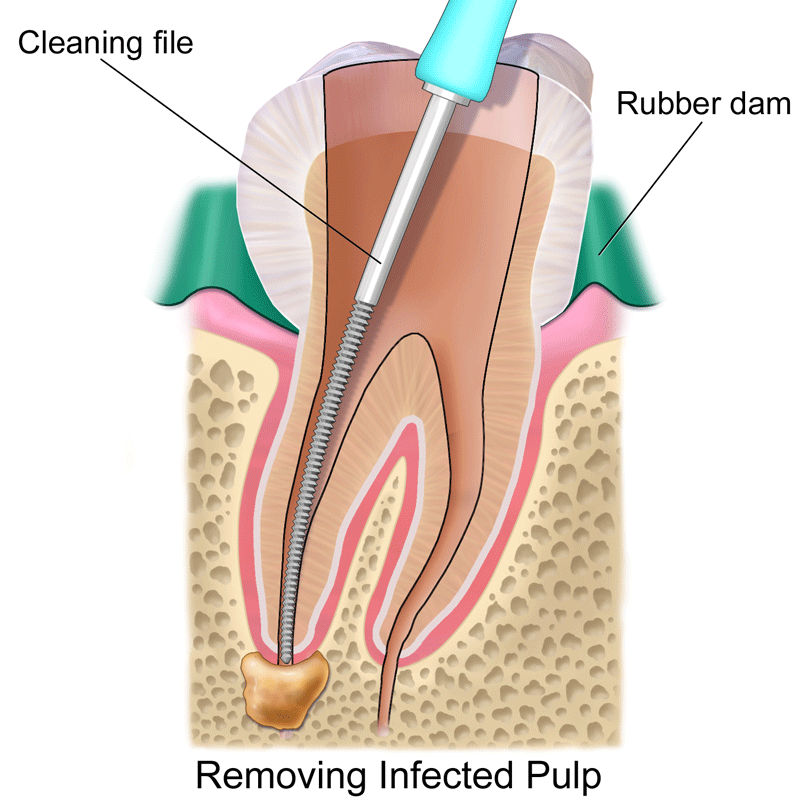
Signs and symptoms of possible pulp therapy:
- Sensitivity to hot and cold.
- Severe toothache pain.
- Sometimes no symptoms are present.
- Swelling and/or tenderness.
Reasons for pulp therapy:
- Decay has reached the tooth pulp (the living tissue inside the tooth).
- Infection or abscess have developed inside the tooth or at the root tip.
- Injury or trauma to the tooth.
What does pulp therapy involve?
A pulpotomy or pulpectomy procedure requires one or more appointments and can be performed by a dentist or endodontist (a root canal specialist).
While the tooth is numb, a rubber dam (a sheet of rubber) will be placed around the tooth to keep it dry and free of saliva. An access opening is made on top of the tooth and a series of root canal files are placed into the opening, one at a time, removing the pulp, nerve tissue, and bacteria for a pulpectomy or just the pulp tissue from the crown (the part of the tooth visible when looking in the mirror) region for a pulpotomy. Tooth decay will also be removed with special dental instruments.
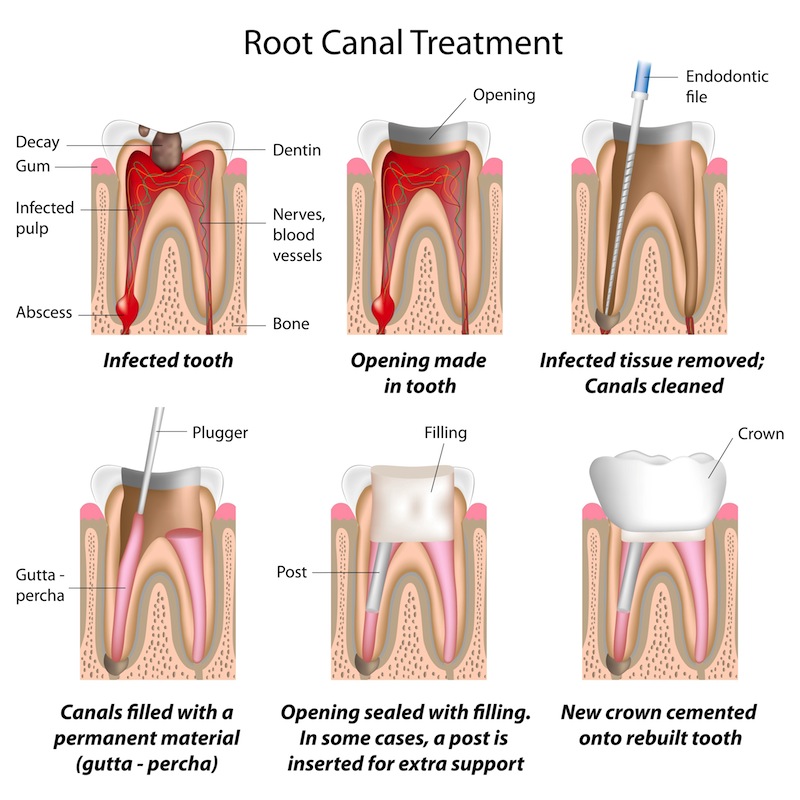
Once the tooth is thoroughly cleaned and medicated, the best way to restore or “fix” the missing tooth structure and provide the best seal from bacteria is to place a stainless steel crown. This will protect the tooth and prevent it from breaking and will restore it to its full function.
After treatment, your tooth may still be sensitive, but this will subside as the inflammation diminishes and the tooth has healed.
You will be given care instructions after each appointment. Good oral hygiene practices and regular dental visits will aid in the life of your child’s pulp treatment.
- Published in General Dentistry
Cosmetic Fillings
COSMETIC FILLINGS
Often front teeth can be repaired and improved with the addition of white composite material. The advantage being less tooth loss, less expensive and giving the tooth longevity before eventually veneering or crowning. As with most dental restorations, composite fillings are not permanent and may someday have to be replaced but they are now very durable, and will last many years, giving you a long lasting, beautiful smile.
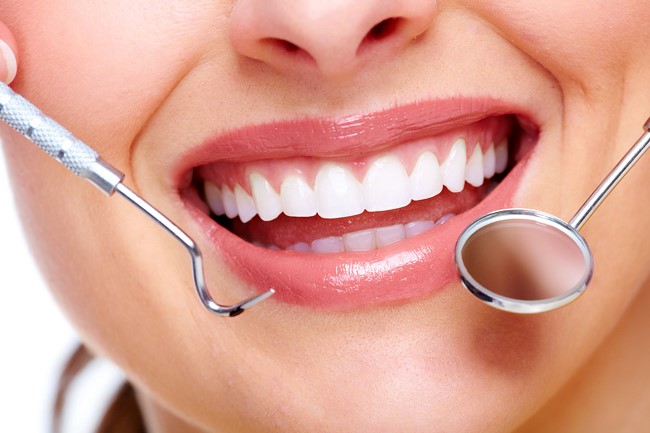
Cosmetic filling
Reasons for cosmetic fillings:
– Chipped teeth.
– Closing space between two teeth.
– Cracked or broken teeth.
– Decayed teeth.
– Worn teeth.
– Will often add longevity before crowning is needed.
How are composite fillings placed?
Composite fillings are usually placed in one appointment. While the tooth is numb, your dentist will remove decay as necessary. The space will then be thoroughly cleaned and carefully prepared before the new filling is placed. If the decay was near the nerve of the tooth, a special medication will be applied for added protection. The composite filling will then be precisely placed, shaped, and polished, restoring your tooth to its original shape and function.
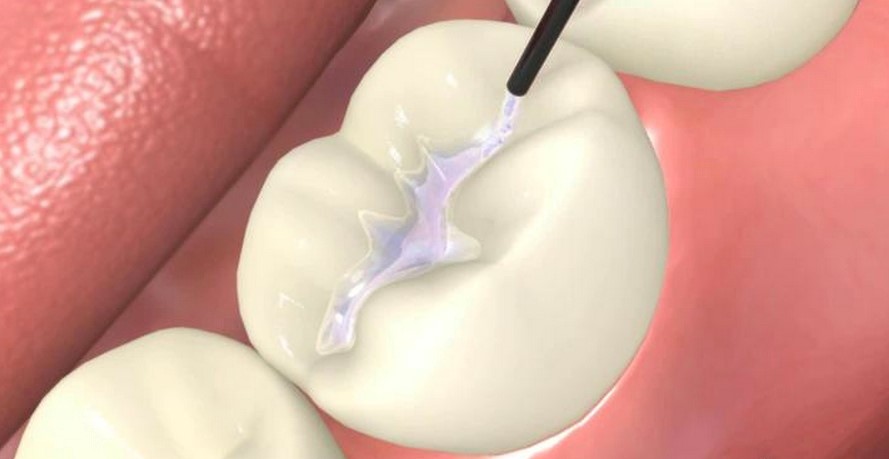
Sometimes a patient might experience sensitivity to hot and cold when composite fillings are first placed, however this persists the filling should be reviewed.
You will be given care instructions at the conclusion of your treatment. Good oral hygiene practices, eating habits, and regular dental visits will aid in the life of your new fillings.

Composite resins, or tooth-colored fillings, provide good durability and resistance to fracture in small- to mid-size fillings that need to withstand moderate pressure from the constant stress of chewing. They can be used on either front or back teeth. They are a good choice for people who prefer that their fillings look more natural.
It generally takes longer to place a composite filling than it does for a metal filling. That’s because composite fillings require the tooth be kept clean and dry while the cavity is being filled. Tooth-colored fillings are now used more often than amalgam or gold fillings, probably due to cosmetics. In a society focused on a white, bright smile, people tend to want fillings that blend with the natural color of their teeth.
- Published in General Dentistry

